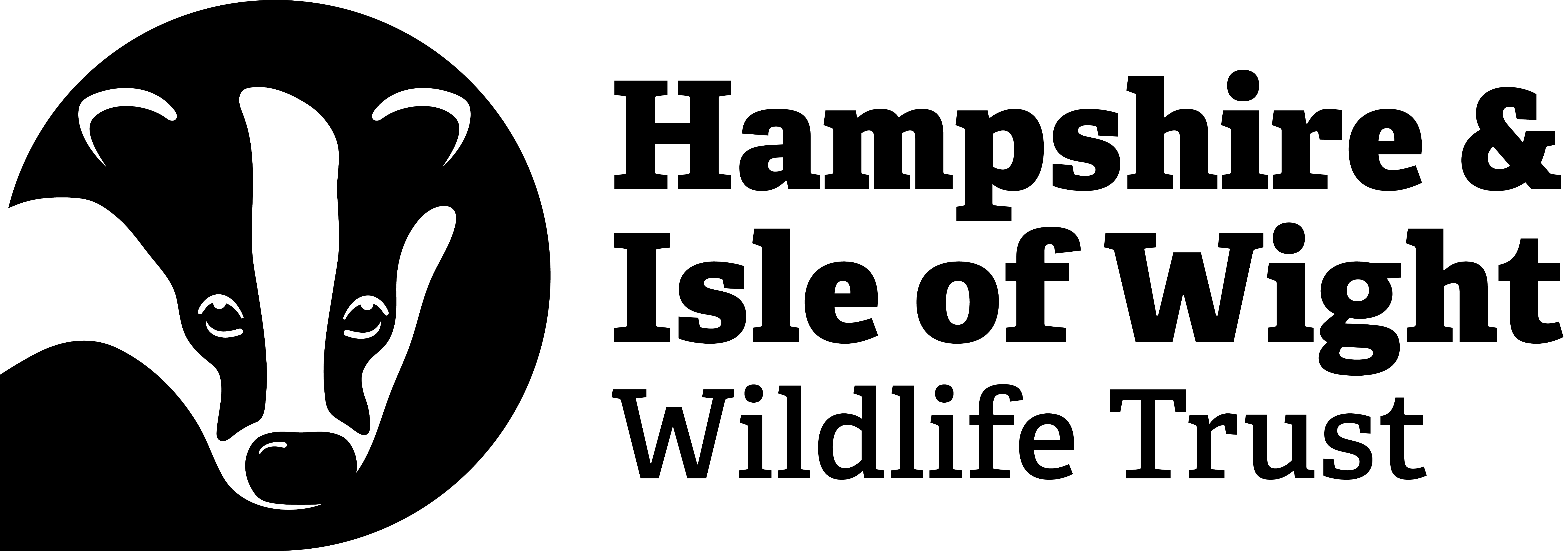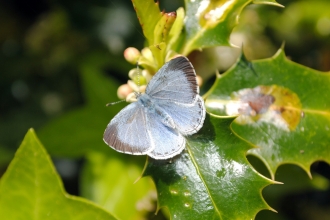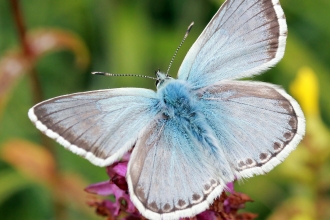The holly blue (Celastrina argiolus) is often the first blue butterfly to appear in spring. It’s a dainty species with pale, silvery-blue wings in the male and slightly duller blue in the female, edged in black. Unlike many butterflies, it tends to fly a little higher, flitting among shrubs and treetops. In gardens, it’s often spotted around holly, where the first-generation lays eggs, and ivy in late summer, where the second-generation breeds. This shift in host plants is unusual - most butterflies stick to one type of caterpillar food.
A tale of three blues
Common Blue ©Ross Hoddinott/2020VISION
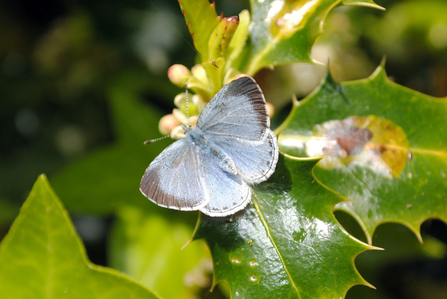
Holly Blue ©Amy Lewis
The common blue (Polyommatus icarus) lives up to its name as it can be found far and wide across the UK. It is a grassland butterfly seen from May to September. Males are a rich, bright blue with narrow black borders, while females are usually brown with a dusting of blue near the body and striking orange spots along the wing edges. When at rest, both sexes close their wings to reveal a beautifully patterned underside of beige, with white and orange spots - perfect camouflage among grass stems.
It thrives on chalk downland, coastal grassland, and wildflower-rich verges. Its caterpillars feed mainly on bird’s-foot trefoil, a low-growing plant with yellow pea-like flowers. On a warm day, males can be seen patrolling territories close to the ground, while females are often more secretive, slipping onto plants to lay eggs.
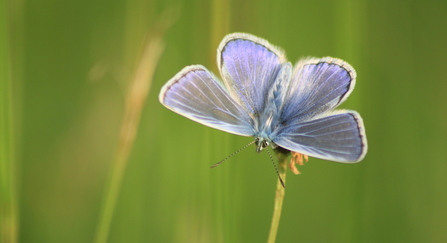
Common blue (male) © Tom Hibbert
The chalkhill blue (Polyommatus coridon) is found mainly on southern England’s chalk and limestone grasslands. Males are a vivid silvery-blue with dark borders, while females are brown with subtle blue dusting. They form dense colonies, often carpeting slopes with their shimmering colour. This butterfly depends on horseshoe vetch (Hippocrepis comosa) as its larval food plant, making its distribution closely tied to this plant’s presence. St Catherine's Hill Nature Reserve is an excellent spot to see them.
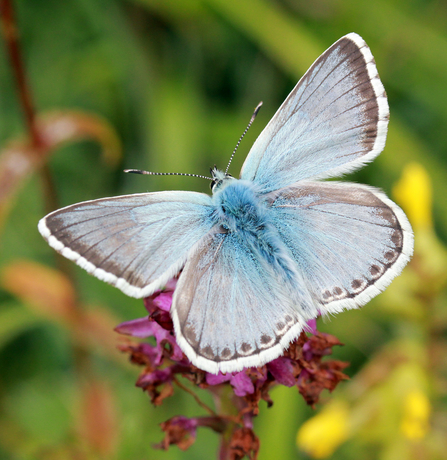
©Jim Higham
Telling these species apart can be difficult at first glance. The holly blue tends to look paler and flies higher, often over hedges and trees, while the common blue stays low over meadows and glows with a deeper hue in the sun. The chalkhill blue is larger than both species and often flying around in large numbers.
There are actually nine resident blue butterfly species in the UK, with six being found in Hampshire and the Isle of Wight, including the (not so blue in colour) brown argus. Check out our butterfly species finder to see what other butterflies you can find.
